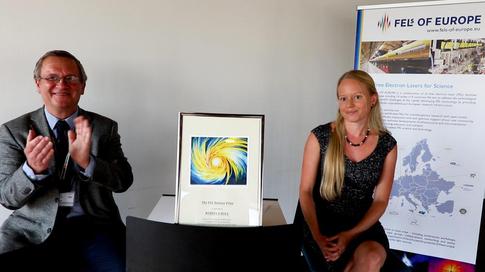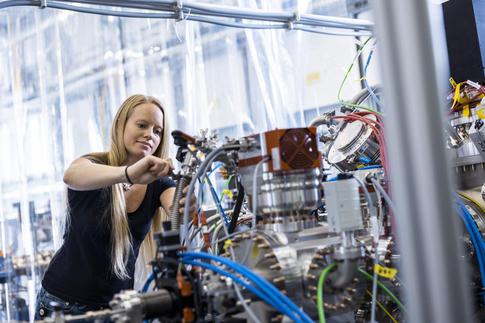XFEL: FELs of Europe award on FEL science and applications 2020
FELs of Europe award on FEL science and applications 2020

Rebecca Boll received the 2020 FELs of Europe award for FEL science and applications from Serguei Molodtsov at a virtual award ceremony. Copyright: European XFEL
Boll explained her scientific background and gave insights into the work that she has been carrying out.
What has been the focus of your research?
As a PhD student in the Max-Planck Advanced Study Group I was already spending all my time in FEL experiments across the world. This was a very exciting time when great international collaborations were being formed and I got hooked on this field right from the start. After being a postdoc at DESY for three years, I became a scientist at SQS in 2017. Having had the opportunity to participate in the start-up of such a complex new instrument and seeing the first results coming out was really amazing, and it continues to be exciting every day. Because the experimental capabilities of SQS match very well with my personal scientific interest and experience, I was eager to also conduct my own beamtimes in addition to supporting our users, which were approved by the proposal review panel.
The award has primarily focussed on two studies, could you give some more details about them?
The two studies addressed by the award are complementary to each other and related. Both make use of the very intense and very short soft X-ray pulses available at SQS for studying processes where several photons are absorbed in a single atom or molecule. This leads to very extreme conditions and provides insight to the fundamental interaction of such pulses with single atoms.

Rebecca Boll working at the SQS experiment station at European XFEL. Copyright: European XFEL / Jan Hosan
In the second experiment we induced the Coulomb explosion of a complex molecule and were able to image it completely by recording the ions resulting from the explosion with unprecedented quality. We could identify each individual atom and its initial position in the molecule in our data without any prior assumptions. This is a big step in imaging of single gas-phase molecules and can now be developed further to study static and dynamic structure in the future.
And lastly, what areas would you like to focus on in the future?
In both projects there are still open questions and effects to be investigated in more detail, so I definitely expect that both will trigger further experiments. One follow-up beamtime is already accepted for the next user run, where we will use the Coulomb explosion imaging to study molecular dynamics triggered by an optical laser pulse.
